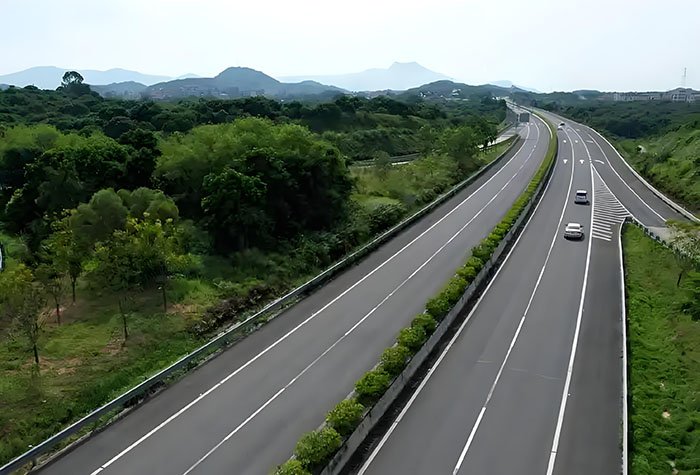The hierarchical structure of highways usually includes multiple levels, each with its specific functions and requirements. The following are typical hierarchical structures and standard requirements for highways:
1. Roadbed
Function: Support road surface structure and disperse vehicle loads.
Materials: Usually earth and stone materials such as sand, gravel, clay, etc. are used.
Standard requirements:
Compaction degree: meets the design requirements, usually not less than 95%.
Flatness: The surface is flat without obvious bumps or depressions.
Drainage: Having a good drainage system to prevent water accumulation.
2. Bottom layer
Function: Further disperse the load and prevent deformation of the roadbed.
Materials: commonly used crushed stone, gravel, cement stabilized soil, etc.
Standard requirements:
Thickness: According to design requirements, it is usually 15-30 centimeters.
Compaction degree: meets the design requirements, usually not less than 98%.
Strength: Meet the design strength requirements, usually tested through CBR (California Bearing Ratio).
3. Grassroots level
Function: The main load-bearing layer disperses vehicle loads to the roadbed.
Materials: commonly used cement stabilized crushed stone, asphalt stabilized crushed stone, etc.
Standard requirements:
Thickness: According to design requirements, it is usually 20-40 centimeters.
Compaction degree: meets the design requirements, usually not less than 98%.
Strength: Meet the design strength requirements, usually through unconfined compressive strength testing.
4. Surface layer
Function: Directly bear vehicle loads and provide a smooth and anti-skid driving surface.
Materials: commonly used asphalt concrete, cement concrete, etc.
Standard requirements:
Thickness: According to design requirements, it is usually 10-20 centimeters.
Flatness: The surface is flat without obvious bumps or depressions, and is usually measured using a flatness meter.
Anti slip performance: Provides sufficient anti slip performance, usually through friction coefficient testing.
Durability: good anti-aging and crack resistance.
5. Ancillary facilities
Function: Provide security and traffic management functions.
Including: guardrails, markings, signs, lighting, drainage systems, etc.
Standard requirements:
Guardrail: meets the requirements of anti-collision level and usually passes collision testing.
Markings: Clear, durable, and meet reflective requirements.
Logo: Conspicuous, easily recognizable, meets size and reflective requirements.
Lighting: Provide sufficient lighting intensity to ensure safe driving at night.
Drainage system: effectively eliminates accumulated water on the road surface and roadbed to prevent water damage.
6. Environment and Greening
Function: Improve driving environment, reduce noise and pollution.
Including: green belts, soundproof walls, environmental protection facilities, etc.
7. Standard requirements:
Green belt: The width and vegetation types meet the design requirements, providing good visual effects and ecological functions.
Soundproofing wall: The height and material meet the design requirements, effectively reducing noise.
Environmental protection facilities, such as sewage treatment facilities, garbage collection facilities, etc., comply with environmental standards.
8. Summary
The hierarchical structure and standard requirements of highways cover various levels from roadbed to surface layer, as well as ancillary facilities and environmental protection measures. Each level has its specific functions and requirements to ensure the safety, durability, and comfort of highways. During the design and construction process, it is necessary to strictly follow relevant standards and specifications to ensure the quality and performance of the highway.


